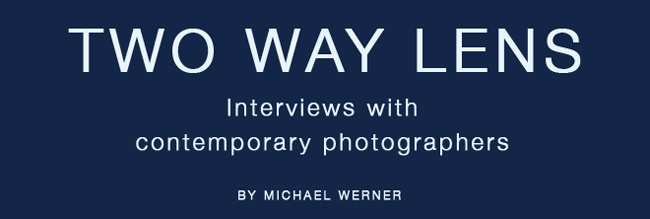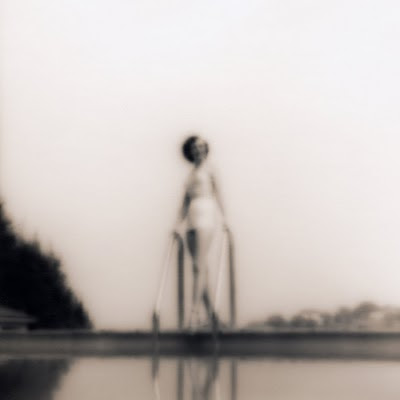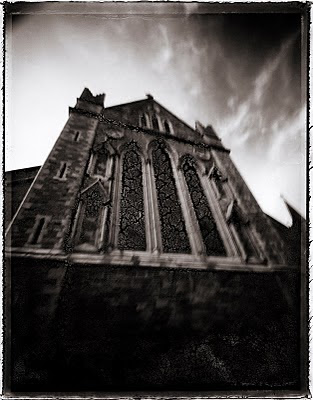MW
What inspired you to start taking photographs, and what is the primary inspiration for you to keep working in this field?
JTD
In retrospect, I have always had an interest in taking photographs. As a kid in Sherwood, Arkansas, I would create elaborate scenes in the backyard with my cats and teddy bears, shooting roll after roll of film and waiting impatiently to get the photographs back from Walmart. I moved to Cambridge at the age of 13 with my family, and I have a vivid memory of daydreaming about setting up a photo studio with a black velvet background in my new room and creating portraits. However, despite all of this, I didn’t get a chance to study photography in a formal way until my last year of high school. Throughout high school, I found solace in the art department and spent my days drawing and throwing pots, but photography was the most popular course and I wasn’t able to take it until my last year. Once I got in, I was immediately hooked. I would often completely skip whatever class came after photography, too immersed in my work and unable to pull myself away from the darkroom. I began photographing incessantly. Though I was exposed to other kinds of art before, I had finally found the way I was able to connect and communicate with the world and was completely addicted. As a young queer person, photography also gave me license to explore my identity. My first real photographs, taken at age 16, were of my fellow queer and gender variant friends and peers. I was just learning how to use my camera and technically, the images were not very good, but the process of making this work was my first experience with the power of exploring identity through photography.
By the time I fell in love with photography, I had already applied to art school, and I began studying at MassArt the next fall. I immediately enrolled in a photography class and never looked back. Luckily for me, I had the chance to study with an absolutely amazing group of photographers: Abe Morell, Nick Nixon, David Hilliard, Barbara Bosworth, Sage Sohier, Shellburne Thurber, Laura McPhee. I realize more and more each day what a privilege it was to learn from these inspiring artists. As a practicing artist, I am very aware how important my time at MassArt was. It gave me a solid foundation on which to stand, both in terms of technical knowledge and my sense of self as an artist, and for that I am unbelievably grateful.
I make photographs because I have to. It is the way in which I relate to the world around me, and the way in which I am able to know and understand myself. I primarily photograph people, and my camera functions as a way to get to know a wide and diverse group of people very intimately. One of the things I love about photography (and this is a sentiment borrowed from Barbara Bosworth) is that is gives me a reason and medium to explore absolutely anything I am interested in. My camera functions as an access card in many ways, giving me a reason and opportunity to know someone or something in a very personal way.
Right now I have two bodies of work going concurrently. The first is called A Place so as to Stay and is an exploration of people within their spaces and environments. I have absolutely loved making this work because every single person I photograph is fascinating and unique, and for a few hours, they let me into their world and show me who they are, at their core. This kind of access is not something I take lightly, and I am continuously grateful that people share their lives with me with such openness and trust. The second body of work is called Open View, which is a year-long documentation of a small, sustainable, peace and education oriented fiber farm in Western Massachusetts. It is one of the most amazing and beautiful places I have ever been, and I am thrilled to be making a long-term body of work there. Making this work has been an incredible experience, as I visit the farm for 2 or 3 days at a time and really immerse myself in that world. I only began shooting this work in May, but already I feel like the people on the farm are like family to me. Even in a relatively short amount of time, I have forged very deep friendships with many of my subjects and look forward to spending time with them every time I visit. In this way, my commitment to making pictures enriches my personal life in a way that is profound and meaningful.
I am always photographing other people, but in some ways my images are always a reflection of myself. If there is something I don’t understand about myself, or something I’d like to explore, I make images about it until I do understand. My image-making process ebbs and flows, sometimes more internally focused and sometimes focused only on the outside world. Being an artist, to me, means constantly evaluating and re-evaluating your own thoughts and emotions. It’s not for the faint of heart. If I’m not able to be fully present and aware of my own self, I can’t make good work. And sometimes that happens, and it is ok- I just shoot through it, and wait for that presence to come back.
MW
In your opinion and experience, how can emerging photographers evaluate themselves as ready to start promoting their works and seek broader exposure for their photographs? What is one vital action you would recommend photographers undertake to find their audience, be included in exhibitions, and gain professional representation?
JTD
I think a very important part of beginning to show and promote your work is having solid work to begin with. I see a lot of photographers who are so eager to show a body of work that they don’t give it the time and emotional energy to let it develop to its fullest potential, whatever that may be. That being said, I find it incredibly helpful to have a network of trusted people who I can show new work to and who will tell me, honestly, what they think, long before I’m ready to put the work on a gallery wall. It is so important to have a sense of community and people that you trust to look intelligently and critically at your work, and unfortunately, this is something that you really have to make for yourself once you’re no longer in the comfort zone of art school.
Once you feel like the work is ready, I would recommend taking steps to get it seen as well as becoming a part of the local art scene. Apply to group shows, attend openings, go to lectures, go to museums, look at other photographers you admire and examine what it is you like about their work. Talk with other artists in a similar stage in their careers and also talk with artists who are more established. I have found it very helpful to reach out to those who are in a place I’d like to be in someday and ask them how they got there, while keeping in mind that everyone has to figure out their own path and the same actions might not work for different people.
I am an obsessive looker, sometimes almost to the point of exhaustion. I like to know what is out there and what other artists are doing, but I also recognize when it’s time to pull back and sit with my own work and thoughts. The art world can be seductive- there is always another show to apply for or another contest to try to win, and it is easy to look around and see what everyone else is doing and feel like you somehow missed the boat or fell behind. At the end of the day, it is critical to find your own rhythm for making and promoting your work, and to be aware of the art world at large (and perhaps more importantly, the world at large), but not be driven by it. It is much more important to be able to continuously make your work and stay true to yourself than it is to get swept up in the tides of shows and “success.”
MW
How did it come about that you achieved the status of successful, professional photographer? What steps were involved in reaching your level of success?
JTD
Success is a tricky concept. When I first left MassArt, I had a pretty rough transition from art student to working artist, largely because of my own expectations. For better or for worse, I left art school with a skewed sense of what it meant to be a working artist. I imagined an endless stream of residencies and traveling, constant states of change, eating ramen and freezing in the winter, etc. Very bohemian and unrealistic. I also left with the expectation that I would continue to be as productive and make as much work as I had been able to in art school, and for the first year, I struggled with letting myself down constantly. I had to find a job, pay the bills, find a way to afford my film, build a darkroom for myself, and discover that ever-slippery balance of time versus money, art-making versus real-world responsibilities. Eventually I adjusted my expectations and found my own rhythm, making work slowly but surely, printing one day a week and shooting when I could. For me, this is success. Finding a way to continue making work that I find meaningful and exciting amidst the confines of going to work and paying my rent represents a huge success to me.
The best kind of success, for me, is when someone sees my work and it makes them feel something. I never feel more excited about my work than I do when someone tells me how much they connected with it and that it had an emotional impact on them. This is something I love about having shows, more than the excitement and the reviews, is that people get to see my work in the way I intended it to be seen and I get to witness their reactions and hear their thoughts. Success is connecting with other people, whether they are my subjects or viewers of the work, on an intimate and meaningful level.
On a more tangible level, I have worked very hard to get my work seen and to make connections with galleries and other arts professionals. The summer after leaving MassArt, I interned with Joseph Carroll (of Carroll and Sons Gallery in Boston, MA) at the Bernard Toale Gallery, which was an invaluable experience and gave me so much insight into the way that galleries work. While working with Joseph, I met a lot of artists and people involved with other galleries in Boston. I also met Arlette Kayafas (of Gallery Kayafas in Boston, MA) and identified her gallery as a place where I would love to show my work. Over the next year, she and I forged a friendship and working relationship, and she gave me my first solo show of my black and white portraits in October of 2008. I recently had a second solo show of my series of large-format Polaroid photographs, Coupled, in March of 2010. Having gallery representation has been critical to moving my career forward, and I am so grateful to be represented by such a wonderful gallery and person. It is truly a blessing to find a gallery representative who understands and supports your work for exactly what it is. I have also continued to apply for group shows, grants, etc, especially those juried by people I respect or in spaces where I’d really like to exhibit. In the beginning, I applied for shows much more widely to try to build my resume, but now I try to be more selective and choose calls for entry that are appropriate for my work or that I feel will advance my career in some way.
Since joining Gallery Kayafas in 2008, I have gained representation in Chicago and regularly exhibited nationwide, from New York to San Francisco. I was recently in a group show at Carroll and Sons Gallery, and among the other artists in the show were David Hilliard and Sally Mann, and I was absolutely blown out of the water to share the wall with these folks.
Ultimately, it is important to know why you do what you do and to have faith in your own work. While it feels good to get into shows, get reviews, etc, you can’t depend on this kind of feedback to motivate you as an artist. There are always ups and downs. Sometimes you’ll feel on top of the world and other times you’ll feel like nothing is going your way and you’re totally lost and can’t figure out where to go next. It is all part of the process. Arlette has assured me on more than one occasion that the quiet time after a show or major body of work is as important as the excitement of exhibiting or achieving some kind of tangible “success.” What is essential to continuing to be an artist and to making photographs is your sense of self and your belief in your work. This, for me, is unwavering, and it is the anchor that keeps me grounded when things around me feel a little rocky or uncertain.
Lastly, you can’t do it completely alone. I have been influenced and positively affected by so many people, whether they are subjects in my images, curators or jurors who select my work for exhibition, or friends and colleagues who I go to for advice, friendship, and support. So many people have supported me and helped me along the way, and for that I am so grateful and hope that I am an equal support to others in return. My work and my life as an artist is as much about forging meaningful relationships as it is about the end product of seeing my work on the wall. For me the excitement and power is in relating to other people, and making photographs is the best way I know how to do that.
 Dan, from the series Open View
Dan, from the series Open View

















































